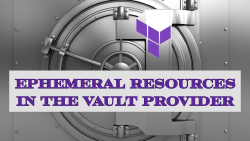


I will be a delegate for Cloud Field Day 5 on April 10-12. During the event we will be attending presentations from several vendors, which will be livestreamed. Before I leave on this grand adventure, I wanted to familiarize myself with each of the presenters and consider how their product/solution integrates with cloud computing. I’m also interested to hear from you about what questions you might have for each vendor, or topics you’d like me to bring up. As a delegate, I am meant to represent the larger IT community, so I want to know what you think! In this post I am going to consider Datrium and what they have to offer in the cloud world.
Aside from a passing familiarity with the name - I’ve seen their booths at conferences and stickers on things - I don’t have any idea what Datrium does. Naturally, I went to their website to find out! Like most vendors these days, their website has Products and Solutions. I generally find the solutions area more interesting, because it tells me more about their aspirations and market fit than reading a product slick with speeds and feeds. Let’s do a fun exercise, I’ll list out the solutions and then try and figure out what the product is without reading the product page. Here we go!
That is a strange mix of solutions. Obviously they are doing something with storage and virtualization. They threw DevOps in there, so I am guessing that their product can fit into a CI/CD pipeline and has some type of API. The cloud data management makes me think that they are managing metadata to a certain degree. That also lines up with healthcare, which is a vertical very concerned with data governance and tracking. Okay, here’s my big guess. Datrium is software defined storage that assists in the management, consolidation, and categorization of data in disparate environments. I bet they do this through three products: OEM appliances, virtual appliances, and a SaaS offering housed in one of the major public clouds.
OK, how did I do? Off to the Products page!
Cool names, but what do they do?
The On-Prem DVX appears to be a combination of compute and disk nodes. The compute nodes are either Datrium branded or bring-your-own running the Datrium software. Datrium splits their solution into Performance and Protection. The performance nodes are running the actual hypervisor and are using Datrium to provide the storage abstraction layer. Protection nodes have a bunch of disk capacity and appear to be focused on efficient data storage and encryption.
Alright, so I am wrong on the virtual appliance product idea. This is a physcial device running a hypervisor and providing software-defined storage for compute to consume. Datrium can be installed on third-party hardware for the compute layer, but it looks like the storage layer is all Datrium hardware and software. Unsurprisingly, the special sauce appears to be how they handle data requests and the lifecycle management of virtual machines, databases, and containers.
The Cloud DVX component is a SaaS offering running in AWS that allows the On-Prem DVX to send backups up to the cloud. Datrium uses global dedupe across their systems, so the data being written up to your Cloud DVX instance should use less storage than just shipping your uncompressed data up to AWS S3. Since it’s globally deduped, pulling data back down from the cloud should be faster as well since it can be rehydrated once it has been pulled down. This reminds me a lot of what Druva does for backups.
I was pretty on point with my Cloud DVX guess. It’s a SaaS offering sitting in AWS.
This one is kind of interesting. It’s basically DR as a Service. You are still using DVX to manage all of your data. CloudShift is the management and control plane for the DR. Think of it as VMware SRM, if you’re familiar with that product set. The data plane can either be On-Prem DVX to another instance of On-Prem DVX or you could be syncing up to Cloud DVX. Since your Cloud DVX doesn’t have anywhere to recover your VMs, Datrium’s solution is to allow you to recover to VMware on AWS (VMC). Why? You have to figure that the On-Prem DVX is providing data services to VMware. So everything is already in that format - VMDKs and the like. In order to recover to anything non-VMware, such as EC2, Datrium would have to convert the format and do some other technical magic. Rather than doing that, they’ve opted to recover to VMC, which doesn’t require a conversion of formats. As someone who is not really into VMC, that doesn’t seem compelling to me. I’d rather see the ability to recover to AWS EC2, Azure VMs, or GCP.
Now that I’ve got a solid background in what Datrium is doing, I’ve got some questions:
Those are the questions I have for Datrium so far.
Do you have questions for Datrium ? LMK and I’ll be happy to ask them too.
Vault Provider and Ephemeral Values
July 21, 2025

Write-only Arguments in Terraform
July 15, 2025

July 1, 2025

On HashiCorp, IBM, and Acceptance
March 3, 2025
